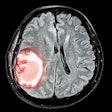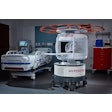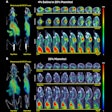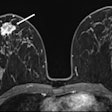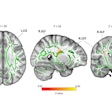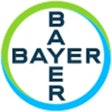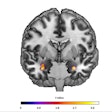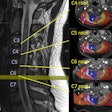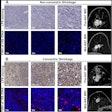In May 2007, the U.S. Food and Drug Administration (FDA) recommend that a "black box" warning label be places on all gadolinium-based contrast agents. Now a group of MR safety experts have deemed the FDA's suggestion as "imprudent."
In a commentary in Radiology, Dr. Emanuel Kanal and colleagues argued that the risk of a patient with renal disease developing nephrogenic systemic fibrosis (NSF) does not currently appear to be the same among the various gadolinium-based MR contrast agents.
By calling for a blanket warning on all gadolinium-based agents, the FDA failed to acknowledge the relative risk across the various contrast media, Kanal and co-authors explained.
As of April 2007, the FDA's MedWatch listed 160 U.S. cases of NSF associated with OmniScan (gadodiamide, GE Healthcare, Chalfont St. Giles, U.K.), 73 associated with Magnevist (gadopentetate DTPA, Berlex, Montville, NJ), and a handful of cases linked to OptiMark (gadoversetamide, Mallinckrodt, Hazelwood, MO). In June 2007, Bracco Diagnostics of Princeton, NJ, reported cases of NSF after renal failure patients were given ProHance (gadoteridol) or MultiHance (gadobenate dimeglumine) in addition to Omniscan.
"The unequal distribution of NSF reported among the various gadolinium-based agents may relate to unequal relative risks among those agents, and it does not acknowledge that the actual risk of developing NSF following Omniscan administration may be higher than that after administration of some or all of the other agents," wrote Kanal; Dr. Dale Broome; Dr. Diego Martin, Ph.D.; and Dr. Henrik Thomsen. "The authors of this commentary believe this implied equality among the five gadolinium-based agents available in the United States to be imprudent in light of present information" (Radiology, September 12, 2007).
The group urged all medical practitioners who treat renal failure patients to weigh the risk of using gadolinium-enhanced MRI against the risk of performing nonenhanced MR alone or using an alternative, radiation-based modality that requires iodinated contrast agent, increasing the chances of nephropathy. Click here to read the full commentary.
In other NSF news, several case studies have been published on the condition in recent months.
In one report, pathologists at the Upstate Medical University in Syracuse, NY, examined biopsy tissue from a patient who underwent multiple gadolinium-enhanced scans, before and after developing NSF. They found that high concentrations of gadolinium persisted in the skin three years after exposure and were associated with calcium and phosphorus. They theorized that gadolinium was being stored in bone and released over time (Contrast Media & Molecular Imaging, July 2007, Vol. 2:4, pp. 199-205).
However, an upcoming paper in the American Journal of Transplantation suggests that "gadolinium is not the only trigger for NSF." The authors based their hypothesis on a review of two organ transplant recipients who developed NSF, but who were not exposed to gadolinium (October 2007, Vol. 7:10, pp. 2425-2432).
Finally, Thomsen co-authored a paper that offered the pros and cons of using gadolinium and/or iodinated contrast in patients with chronic kidney disease (La Radiologia Medica Torino, August 2007, Vol. 112:5, pp. 621-625).
By Shalmali Pal
AuntMinnie.com staff writer
September 18, 2007
Related Reading
Noncontrast MR: The solution to the NSF problem? July 26, 2007
FDA asks for 'black box' warning for gadolinium contrast, May 23, 2007
Gadolinium: A 'necessary factor' in the development of NSF? March 27, 2007
Copyright © 2007 AuntMinnie.com


.fFmgij6Hin.png?auto=compress%2Cformat&fit=crop&h=100&q=70&w=100)





.fFmgij6Hin.png?auto=compress%2Cformat&fit=crop&h=167&q=70&w=250)
